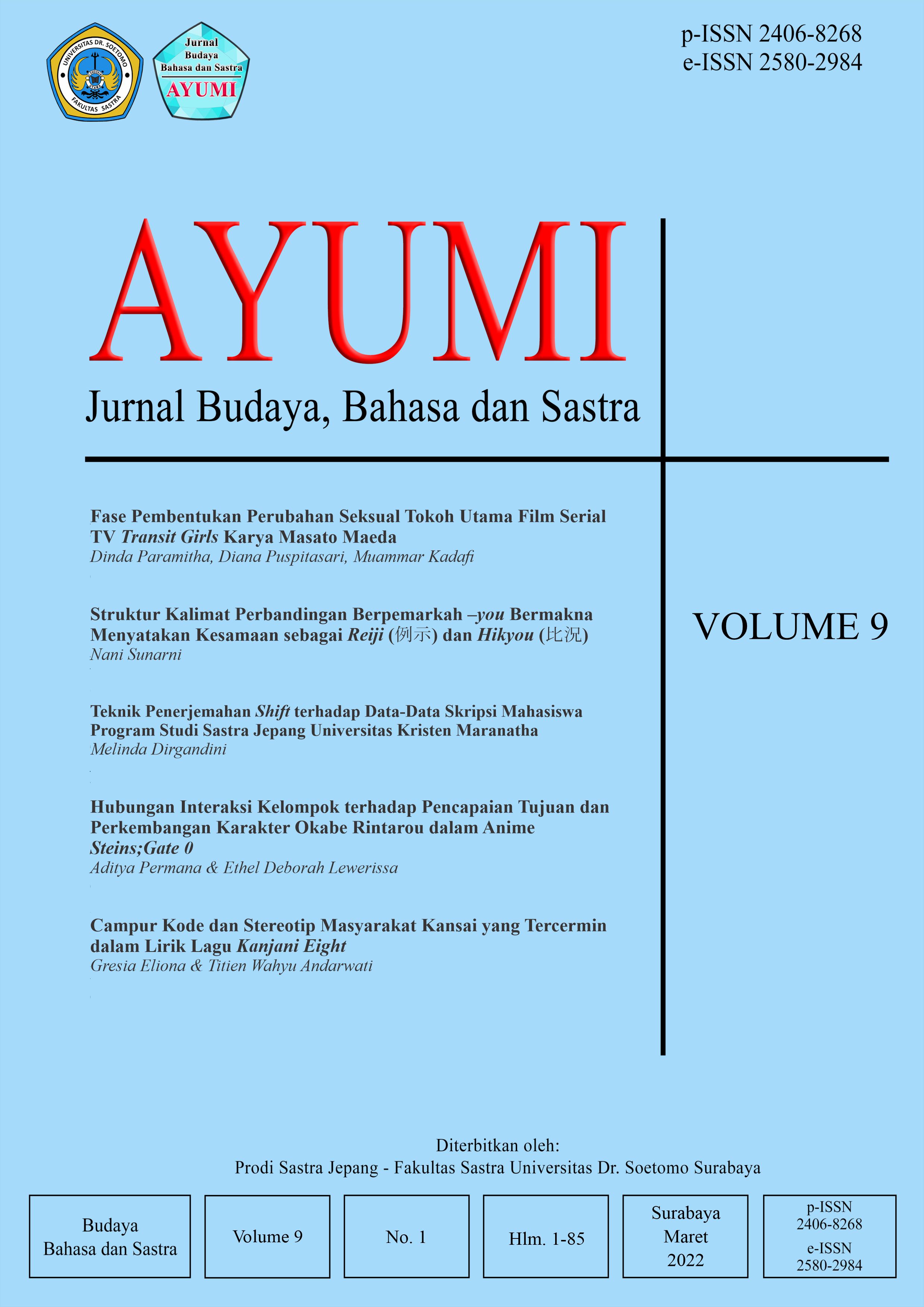Teknik Penerjemahan Shift terhadap Data-Data Skripsi Mahasiswa Program Studi Sastra Jepang Universitas Kristen Maranatha
 Abstract views: 391
,
Abstract views: 391
,
 34-47 (Bahasa Indonesia) downloads: 533
34-47 (Bahasa Indonesia) downloads: 533
Abstract
The language reflects the society and culture of the language user, so that in the translation process it is inevitable that there will be shifts from the source language (S.L.) to the target language (T.L.). This study aims to describe the types of shifts in the thesis data of students of the Maranatha Christian University Japanese Literature Study Program and describe the effect of these changes on the meaning of the translation of thesis data for Japanese Literature Study Program students. The object of this research is the students' linguistic thesis data. The data on the student thesis is written in Japanese using Japanese letters, then Japanese using Latin letters, and then translated into Indonesian. This research is a qualitative descriptive study that aims to complete the translation shift in form and meaning. In the analysis process, the method used is the translational equivalent method. The theories used include Nida and Taber and J.C. Catford (1965). The translation shift is divided into two types, namely level shift and category shift, to achieve a good level of equivalence for the quality of the resulting translation. Category shift is divided into four subsections: structure shift, class shift, unit shift, and intrasystem shift. The conclusion obtained from this research is the shift translation that occurs in the form of class shift, structure shift, and intrasystem shift. Shifts are unavoidable to get easy-to-understand translation results in the target language (T.L.).
Keywords: Catford; translation shift; equivalence.



1.jpg)


















